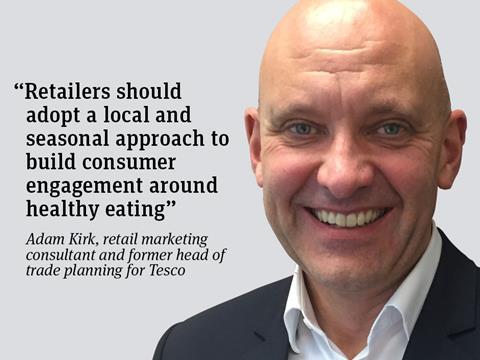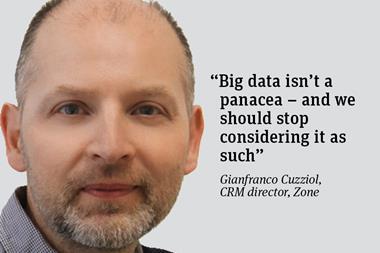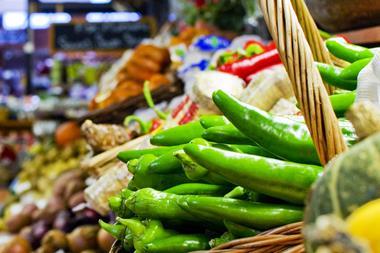
The M&S Adventures in Food campaign started the year highlighting the virtues of healthy, fresh and exciting eating. Yet the campaign is unlikely to drive the footfall the food retailer wants post-Christmas. While M&S offers great quality and an expansive range, it’s lacking a third factor for success: an affordable price.
To market healthy eating to consumers, supermarkets, and the big four in particular, need to move away from offering a ‘one size fits all’ approach. The excitement and variety of the weekly shop is no longer there when we can expect the same food, at the same price, each week. Unsurprisingly, if the same products are stocked in all locations regardless of local product or demographic, there is simply no incentive to shop.
To educate customers about healthy eating, the first step is to get people excited and engaged about range. Varying produce and essentially tapping what M&S has identified in its latest campaign is where retailers should be looking. However, it would be naive to say price isn’t a factor.
Currently, to source large volumes of fresh products out of season, retailers have to import from abroad. To vary the shopping experience, supermarkets should try to shift to buying locally and seasonally instead. This approach brings down the cost of transporting goods from overseas and allows the supermarket to provide seasonal discounts that wouldn’t otherwise be possible. The customer benefits from the variety of fresh produce, which is local, relevant and sold at an affordable price.
An example from Tesco, during my time there, was in the Evesham store, where asparagus was imported from abroad at the height of the English asparagus season. Evesham is famous for its asparagus, yet at the height of the English season asparagus was imported from abroad and the store didn’t stock any product from the local area. This can work against the supermarkets, as it is often the local produce, available in season, that inspires customers to buy. In this respect, the UK can learn a lot from the US, where the consumer mindset is more geared towards buying locally sourced produce. An example is Louisiana, where the population are passionate about cooking from scratch and actively choose to buy local ingredients. Supermarkets in Louisiana cater to this by stocking seasonal produce, seafood and alternating the ranges of food available, creating the right promotions at the right time of year.
This is echoed in South Florida, where food retailers adapt their offer to cater for the large Hispanic population, for whom fresh, local produce at a great price is a priority when purchasing
Once retailers start establishing a local and seasonal approach, it’s possible to create programmes that build customer engagement around healthy eating, encouraging people to try new recipes.
An example is enlisting celebrity chefs to create healthy recipes that use locally sourced, seasonally relevant produce in order to educate customers that it’s possible to cook family meals at an affordable price.
In the longer term, it’s the retailers’ range of produce and infrastructure that needs to change. Supermarkets need to offer a healthy and exciting range while meeting the needs of price-conscious consumers.
Adam Kirk, retail marketing consultant and former head of trade planning for Tesco


















No comments yet